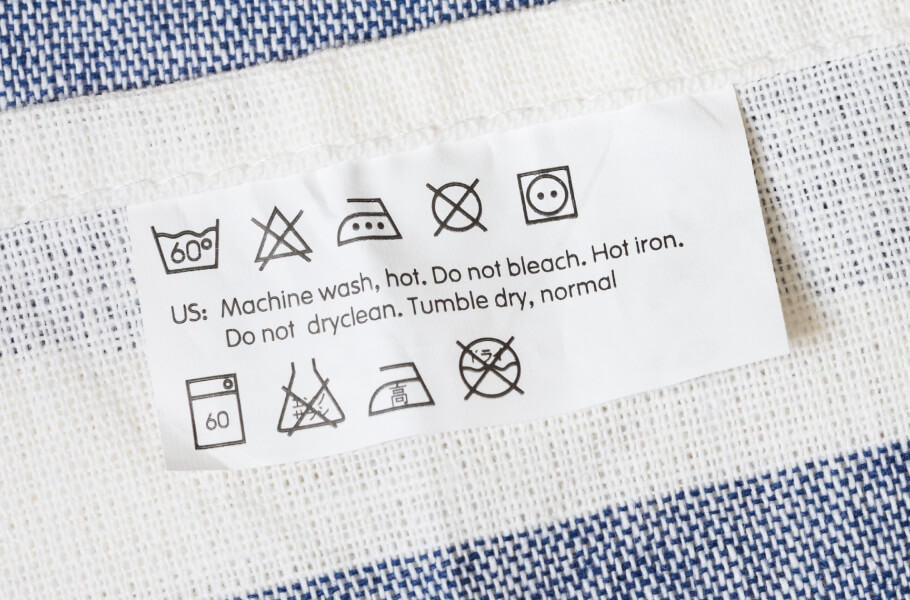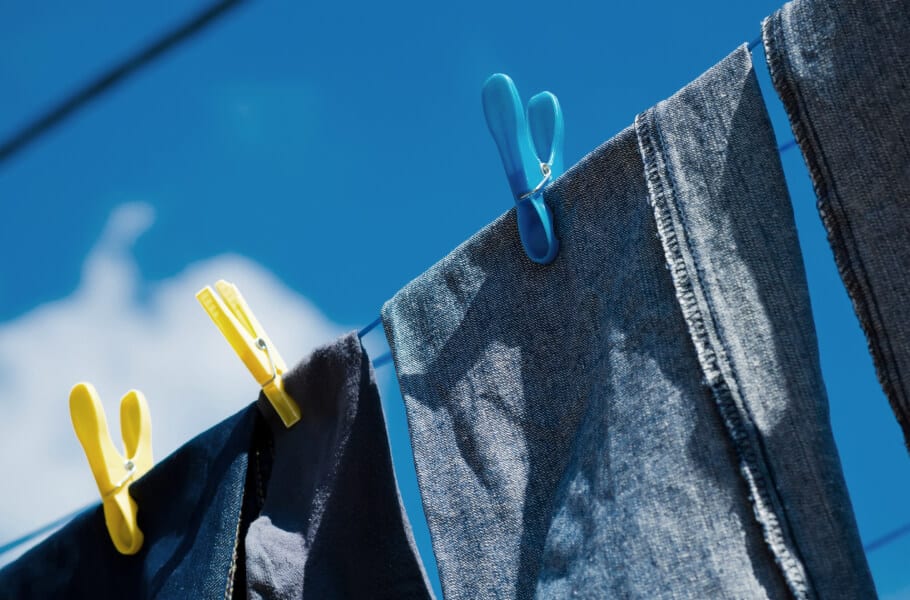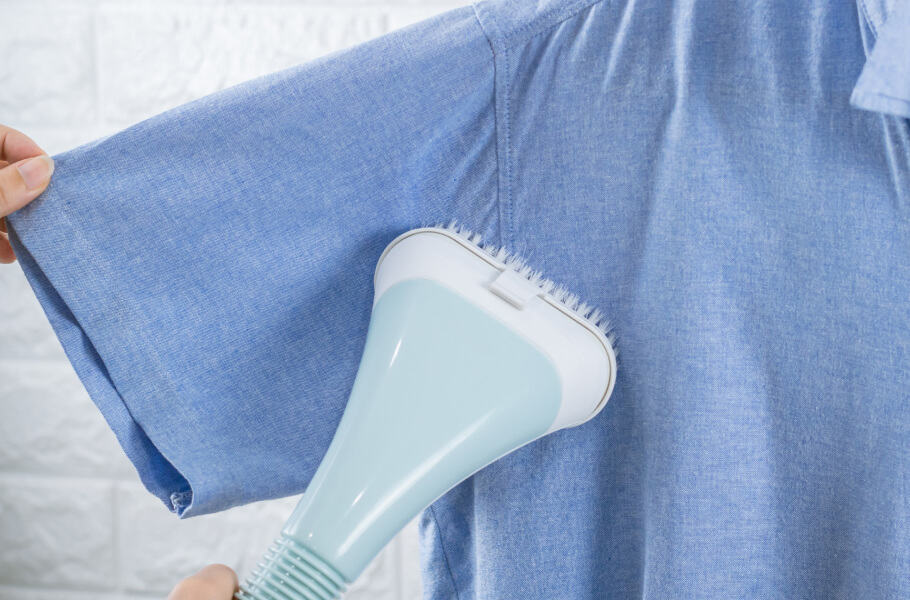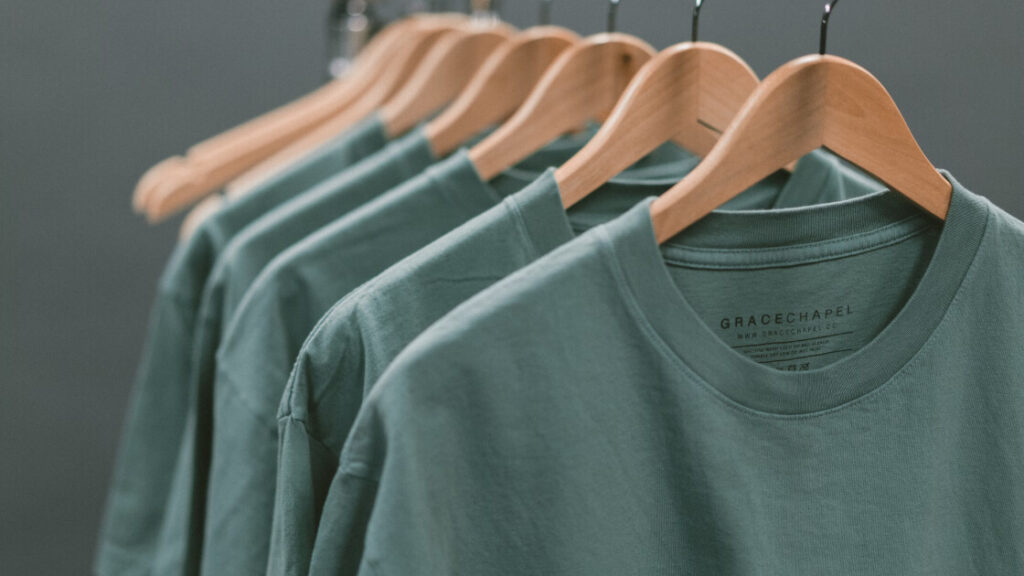We’ve all been there – you pull your favorite sweater out of the dryer only to find it’s shrunk to doll size after laundry.
As you mourn the loss of yet another cherished garment that you assume is beyond saving, you are told that, in many cases surprisingly, it’s possible to reverse the shrinking process and bring your clothes back to their original size.
In this article, we will walk you through some easy techniques on how to unshrink clothes that have accidentally shrunk in the wash. With a little bit of time and elbow grease, you can relax your cotton, reshape your wool, and salvage your favorite silk.
Avoiding Shrinking in the First Place
Before we start discussing the specifics of how to unshrink clothes, let’s back things up a step. The best way to avoid accidentally shrinking your clothes is to never shrink them in the first place. If you establish the right habits, the probability of having problems will significantly decrease.
Washing Label Symbols
Do yourself a favor and inspect that tag before throwing your washing label symbols into the next load.

Here is a list of the most important washing label symbols.
- Washing tub: This symbol indicates whether the garment can be washed in a washing machine. If there is a number inside the tub, it represents the maximum temperature that the garment can withstand.
- Bleaching triangle: A triangle symbol indicates whether the garment can be bleached. If there are two diagonal lines inside the triangle, it means that only non-chlorine, color-safe bleach should be used. If there is a cross over the triangle, it means that the garment cannot be bleached.
- Ironing symbol: This one indicates whether the garment can be ironed and at what temperature. The dots on the iron symbol correspond to the dots on an iron’s temperature settings. The more dots there are, the more heat can be applied. If the iron symbol has a cross through it, the garment is not suitable to be ironed.
- Dry cleaning symbol: This symbol indicates whether the garment can be dry cleaned. If there is a letter inside the circle, it tells the dry cleaner which chemical wash and method to use. If the circle has a cross over it, the item should not be dry cleaned.
- Drying symbol: A drying symbol indicates how the garment should be dried. If the square has one drooping line, it means you can hang your clothes to dry on a washing line outside. If the square has three vertical lines in it, you can drip dry your clothes on a rack indoors. If the square has one horizontal line, you should dry the garment flat to keep its shape.
Water Temperature Matters
When it comes to avoiding shrunken clothes, water temperature matters.
Hot water provides the most aggressive cleaning for really dirty clothes. But it can also damage delicate fabrics and cause them to shrink. And here comes the question – how to unshrink clothes damaged by the water temperature? Warm water is a safer bet for most laundry loads. It provides sufficient cleaning power without the intensity of heat.
Cold water is the most gentle on fabrics. It is less likely to cause clothes to shrink.
Very delicate items like silks, wools, spandex, and synthetic blends should always be washed in cold water. The fiber molecules in these fabrics tighten up when exposed to heat. Hot or even warm water can cause them to contract and lose their shape.
So if you want to avoid that dreadful shrunken sweater syndrome, stick to cold water for your delicates. Warm or hot water offers no extra cleaning benefits for these items. Moreover, it’s almost sure that you will need some tips on how to unshrink your clothes afterward.
The Role of Detergents
The type of detergent you use to wash your clothes also plays a part in preventing shrinkage.
Harsh chemical detergents can be too abrasive for delicate materials like wool, silk, spandex, and other synthetics. They can strip the fibers of essential proteins that provide structure and flexibility.
That’s why it’s important to choose a gentle, eco-friendly laundry detergent for your fine washables. Look for plant-based formulas free of dyes, perfumes, and other harsh additives. These are the safest cleaning products for delicate garments. They get clothes clean without stripping or damaging the fibers.
Even for everyday cottons and linens, a gentle detergent is best. A milder formula helps clothes hold their shape and size wash after wash.
Reading labels is key when selecting detergents. Avoid products marked “harsh” or “concentrated”. Look for key terms like “gentle”, “delicates”, and “mild”. We recommend EnviroKlenz Laundry Detergent, which is safe to use on all washable fabrics, including cotton, washable wool, polyester, spandex, and washable lace.
Handle them with care and your clothes will remain wearable for years to come.
The Laundry Sorter’s Role
Clumping all your clothes together can lead to shrinking disasters. The sheer chaos of mixed fabrics, colors, and temperatures is a recipe for shrunken garments.
Sorting your laundry effectively takes a bit more time upfront. But it pays off in the long run by streamlining your washing process and preventing mishaps.
A laundry sorter with multiple compartments lets you easily divide loads. Have one bin for lights, one for darks, and another for delicates. You can also sort by material – cottons in one section, linens in another, synthetics and knits in a third.
Consider getting different sorters for each family member too.

How to Clean a Washer?
Here’s a laundry secret you may not know – keeping your washing machine clean can help prevent shrinking issues. When washers aren’t properly maintained, residue from dirt, grime, and old detergent can build up. This creates an abrasive environment that can be harsh on fabrics, making them more prone to shrinking.
That’s why it’s wise to deep clean your washer every few months. With some simple household products, you can easily remove built-up gunk and mineral deposits.
Start by running an empty hot water cycle with either white vinegar or baking soda. The acidic vinegar will help dissolve residue while the alkaline baking soda acts as a scrubber. For extra cleaning power, do a cycle with each one.
Next, make a DIY cleaning tablet by filling the detergent compartment with washing soda or borax. Run a hot wash cycle to circulate the cleaner and deodorize the machine.
Give the inside drum and rim a scrub with either a toothbrush or magic eraser. This tackles any remaining buildup in hard-to-reach spots.
Make cleaning your washer part of your laundry routine, even if it’s only a few times a year. Your clothes will thank you with a better fit, color, and softness wash after wash.
And finally, you can save these steps by opting for a quality product, such as the EnviroKlenz Washing Machine Deodorizer that leaves both your machine and clothes clean and odorless.
How to Dry Clothes?

Drying is another laundry step where clothes can shrink if you aren’t careful.
Fabrics are in a vulnerable state when wet. If not dried properly, they can lose their shape and shrink. Here are a few tips on how to unshrink you clothes during the drying process:
- Learn how to dry clothes without a dryer: Fresh air and sunlight are gentle on fabrics. Lay items flat or hang delicates to allow them to dry naturally without damage.
- If machine drying, always follow garment label instructions for temperatures and cycles.
- Use the air fluff or air dry cycle if your dryer has this option. It simply circulates ambient air to dry clothes without adding any heat that could cause shrinkage.
- Regardless of the drying method, it’s crucial not to overdry fabrics. Clothes should be slightly damp when removed from the line or dryer. The remaining moisture allows fibers to relax properly.
With some care when drying your clothes, you can keep them looking their best.
Unshrinking Clothes – The Magic Tricks
If despite your best efforts, you’ve ended up with shrunken clothes, don’t panic. Try these methods.
The Soaking Method
One of the simplest ways to relax and unshrink many fabrics is with a good long soak. This method is effective for mildly to moderately shrunken materials like cotton, linen, and wool.
Here is how to do it step-by-step:
- Fill a sink, tub, or bucket with lukewarm water. Add a small amount of hair conditioner, which helps relax fibers. Submerge the shrunken item and let it soak for at least 30 minutes, up to a few hours for severely shrunk items. As the garment soaks, the fibers will gently expand and loosen up.
- Occasionally stretch and massage the fabric to coax it back into shape. For an extra added bit of smoothing, add a few tennis balls to the soak to act as a gentle abrasive when the item is moved around.
- After sufficient time has passed, drain the water and lay the garment flat on a towel. Gently stretch to the desired proportions, coaxing the fibers to stay expanded. Allow to fully air dry before wearing or washing again.
For severe shrinkage, repeat the process a few times over several days.
Steam Your Way to Victory

Steam is a secret weapon when it comes to the question of how to unshrink clothes. The moisture relaxes fibers while the heat gently stretches them back into shape.
Handheld fabric steamers offer the most control for targeting shrunken areas. Hold the steamer head about an inch from the material and pass slowly over each section until the surface is damp and relaxed. Stretch and smooth with your hands as you go.
You can also hang or lay garments in your bathroom and use a hot shower to create a steam room effect. The ambient moisture and heat will help the fibers expand and elongate.
Whatever method you decide to use, take care not to saturate or scald the fabric with heat that is too high/hot for direct contact. If you are not sure, first test it out on an inconspicuous area. Use light pressure and keep hands and steamer moving to avoid damaging fibers.
The Stretching Technique
For severely shrunken clothes that don’t respond to soaking or steaming, it’s time to get hands-on. Manual stretching can coax even stubbornly shrunken fabrics back into submission.
This approach takes patience and care. Don’t expect instant results – you may need multiple rounds over several days. Work in sections, stretching the fabric bit by bit to avoid tears. Here are a few tips:
- For knits like wool sweaters, lay flat and gently pull outwards on areas that have shrunk inward. Keep the fabric damp and gradually ease into the desired shape. Let dry fully between sessions.
- Woven fabrics like cotton and linen can be stretched on a rack or by pinning to a board. Mist with water and use pins to hold the fabric taut at each end. Apply mild, consistent tension over time to stretch seams and hems.
- Synthetics like polyester require extreme care since they lose elasticity when overstretched. Go slowly, applying minimal tension, and stop at the first sign of resistance.
No matter the material, resist the urge to yank or overpull. Too much force can damage fibers beyond repair.
Conclusion
While an accidental trip through the dryer can spell disaster for your favorite garments, fear not. With a little bit of patience and perseverance in our tips on how to unshrink clothes, along with the proper restoration techniques, you’ll be able to don your favorite threads once more.








